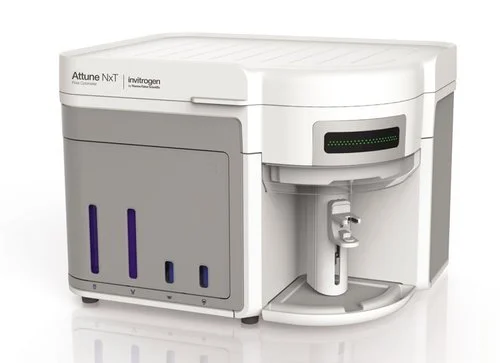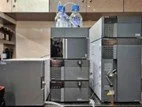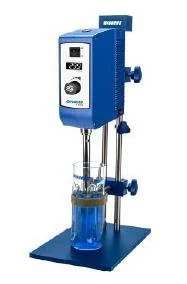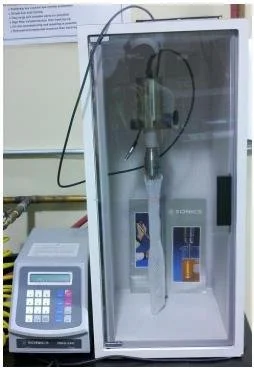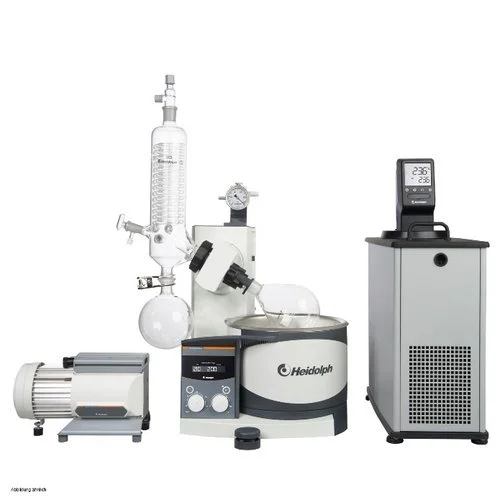Equipments
Cell counter
Biorad offers high-performance, automated cell counters designed to meet the needs of any lab for accurate and precise cell counting without the drudgery, wasted time, subjectivity, and variability of manual hemocytometer counting. Developed by expert cell biologists with the aid of artificial intelligence, the Invitrogen Countess 3 and Countess 3 FL instruments are almost a paradox: automated cell counters that think like a cell biologist.
CO2 incubator
CO2 incubators integrate a comprehensive set of systems to create a controlled environment for cell culture growth in a chamber that is then protected by a multi-layered defence from contamination. The standard infrared CO2 sensor accurately measures chamber gas levels regardless of temperature or humidity while separately adjustable chamber and door heaters ensure balanced chamber uniformity. Each cell culture incubator features a smooth, easy to clean stainless steel inner chamber where the air is both kept at positive pressure and constantly filtered to an ISO 5 level to prevent external contamination of cell cultures. A multilingual touch panel control system common to all models allows easy input of every set point as well as on-screen and downloadable data monitoring to document historical culture growth conditions. Common to all lab CO2 incubators, each can be stacked to efficiently use the valuable space in your laboratory.
Electro-spun Nanofiber machine
Electrospinning is a fiber production method that uses electric force to draw charged threads of polymer solutions or polymer melts up to fibre diameters in the order of some hundred nanometers. Electrospinning shares characteristics of both electrospraying and conventional solution dry spinning of fibres. The process does not require the use of coagulation chemistry or high temperatures to produce solid threads from solution. This makes the process particularly suited to the production of fibers using large and complex molecules. Electrospinning from molten precursors is also practiced; this method ensures that no solvent can be carried over into the final product.
Fluorescence-activated cell sorting (FACS)
Fluorescence-activated cell sorting (FACS) is a specialized type of flow cytometry. It provides a method for sorting a heterogeneous mixture of biological cells into two or more containers, one cell at a time, based upon the specific light scattering and fluorescent characteristics of each cell. It is a useful scientific instrument, as it provides fast, objective and quantitative recording of fluorescent signals from individual cells as well as physical separation of cells of particular interest.
Fluorescent microscope
A fluorescence microscope is an optical microscope that uses fluorescence instead of, or in addition to, scattering, reflection, and attenuation or absorption to study the properties of organic or inorganic substances. "Fluorescence microscope" refers to any microscope that uses fluorescence to generate an image, whether it is a simple set-up like an epifluorescence microscope or a more complicated design such as a confocal microscope, which uses optical sectioning to get better fluorescence image resolution.
Freeze dryer
Freeze drying, also known as lyophilization or cryodesiccation, is a low-temperature dehydration process that involves freezing the product and lowering pressure, removing the ice by sublimation. This is in contrast to dehydration by most conventional methods that evaporate water using heat. Freeze-drying causes less damage to the substance than other dehydration methods using higher temperatures. Nutrient factors that are sensitive to heat are lost less in the process as compared to the processes incorporating heat treatment for drying purposes. Freeze-drying does not usually cause shrinkage or toughening of the material being dried. In addition, flavours, smells, and nutritional content generally remain unchanged, making the process popular for preserving food.
High Performance Liquid Chromatography
High-Performance Liquid Chromatography (HPLC) is a powerful analytical technique widely used for separating, identifying, and quantifying components in complex mixtures. It operates by passing a liquid sample through a column packed with a stationary phase under high pressure, with the separation based on differences in the interaction of analytes with the stationary phase and the mobile phase. HPLC is versatile, accommodating a variety of stationary phases, mobile phases, and detection methods such as UV-Vis spectroscopy, fluorescence, or mass spectrometry, making it suitable for diverse applications in pharmaceuticals, food safety, environmental analysis, and biotechnology. The technique offers high resolution, precision, and reproducibility, enabling accurate and efficient analysis of small molecules, peptides, proteins, and other compounds. Its capability to handle sensitive and thermally labile substances further enhances its utility in fields requiring rigorous quality control and research development.
High-speed Homogenizer
This homogenizer is used to homogenize, emulsify, and disperse material in pharmaceutical, cosmetics, food, chemical, petrochemical industry, etc. High speed mechanical and hydraulic shear forces are the real key to the success of this machine. Rotor & stator generates a shearing action which insures that materials being processed are subjected to thousands of shearing actions each minute. High speed rotor operating at close clearance to stator draws material in from the bottom of the mixing vessel and subjects it to intense mixing and shearing action. The rotor accelerates the product towards the blades periphery. There it is expelled through the stator openings into the body of the mix while undergoing an intensive mechanical and hydraulic shearing action. Simultaneously new material is drawn in. The expelled mixture is deflected by the tank wall completing the circulation pattern.
Microplate reader
Plate readers, also known as microplate readers or microplate photometers, are instruments which are used to detect biological, chemical or physical events of samples in microtiter plates. They are widely used in research, drug discovery,[1] bioassay validation, quality control and manufacturing processes in the pharmaceutical and biotechnological industry and academic organizations. Sample reactions can be assayed in 1-1536 well format microtiter plates. The most common microplate format used in academic research laboratories or clinical diagnostic laboratories is 96-well (8 by 12 matrix) with a typical reaction volume between 100 and 200 μL per well. Higher density microplates (384- or 1536-well microplates) are typically used for screening applications, when throughput (number of samples per day processed) and assay cost per sample become critical parameters, with a typical assay volume between 5 and 50 μL per well. Common detection modes for microplate assays are absorbance, fluorescence intensity, luminescence, time-resolved fluorescence, and fluorescence polarization.
LC/MS
Triple quadrupole mass spectrometry is a versatile tool that can be adapted to various applications. Shimadzu’s triple, quad LC-MS/MS instruments offer superior performance and sensitivity to meet the demands of high-level quantitative analysis, which includes pesticide screening, drug-of-abuse testing, environmental monitoring, biomarker evaluation and many more.
Probe Ultra-sonicator
Devices employing ultrasonic waves to homogenize samples, particularly cells/subcellular structures in suspension; also includes accessories and support devices such as power options, probes, sound enclosures, and more. Sonication uses sound waves to disrupt substances. An electrical signal is converted into a vibration that can mix solutions, dissolve solids into liquids, and remove dissolved gas from liquids. When sound waves at ultrasonic frequencies (>20 kHz) are used, the process is called ultra-sonification. In the laboratory, sonication can be applied via an ultrasonic probe, also called a sonicator or sonic dismembrator. The probe creates sound waves that produce pressure, causing liquid streaming and rapid bubble formation. The bubbles are very small at the start, but grow and coalesce, vibrate violently, and then collapse in the process called cavitation.
Rotary evaporator (Rotovap)
A rotary evaporator (rotovap) is a device used in chemical laboratories for the efficient and gentle removal of solvents from samples by evaporation. When referenced in the chemistry research literature, description of the use of this technique and equipment may include the phrase "rotary evaporator", though use is often rather signalled by another language (e.g., "the sample was evaporated under reduced pressure").
Rotary evaporators are also used in molecular cooking for the preparation of distillates and extracts.
Ultra-cold Centrifuge
An ultra-cold centrifuge is a specialized device used to separate components of a sample at high speeds under ultra-low temperatures, often ranging from -20°C to -80°C. This temperature control prevents degradation of sensitive materials like proteins, nucleic acids, and organelles during centrifugation. Capable of generating immense centrifugal forces, it is essential for precise separation of fine particles, such as subcellular fractions and viruses. Widely used in biochemistry, molecular biology, and medical research, it plays a key role in proteomics, genomics, and vaccine development.
UV-Vis Spectrophotometer
Ultraviolet-visible spectroscopy or ultraviolet-visible spectrophotometry (UV-Vis or UV/Vis) refers to absorption spectroscopy or reflectance spectroscopy in the ultraviolet-visible spectral region. Ultraviolet-visible (UV-VIS) spectroscopy is an analytical method that can measure the analyte quantity depending on the amount of light received by the analyte.
Zeta Sizer
Zetasizer Advance is the successor to the highly successful and market-leading Zetasizer Nano. Each of the three models in the Zetasizer Advance Range offers particle size, particle charge (zeta potential) and molecular weight analysis. In addition, each benefits from advances include Adaptive Correlation, M3-PALS zeta potential analysis, constant current zeta mode and our deep learning-based data quality advice system.



